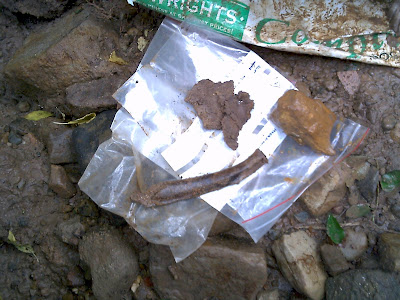The image above shows my latest find just above the trowel
The yellow glove marks the spot i started digging into the hard packed gravels, the new find is over 2 metres into the gravels.

The pic above shows the new find sitting above what i believe is the compressed remains of part of a preserved tree.
The gravels are visible above and below the preserved wood.
The pic above shows the fossil bone almost dug out with the blue- gray layer above.
These pics show the rib piece i have yet to identify it but it looks to have belonged to Ungulate
The yellow glove marks the spot i started digging into the hard packed gravels, the new find is over 2 metres into the gravels.

The pic above shows the new find sitting above what i believe is the compressed remains of part of a preserved tree.
The gravels are visible above and below the preserved wood.
The pic above shows the fossil bone almost dug out with the blue- gray layer above.
These pics show the rib piece i have yet to identify it but it looks to have belonged to Ungulate











